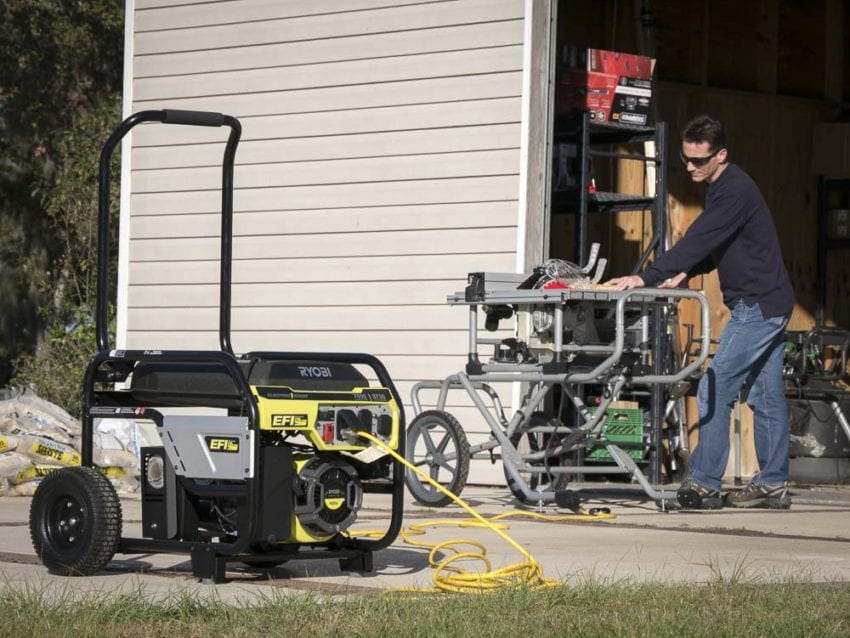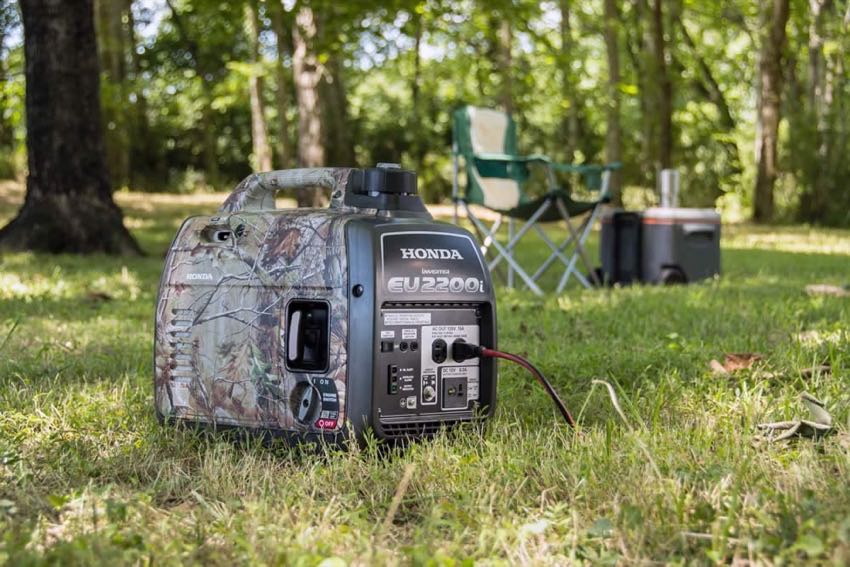Curious about how big of a generator you need to power your table saw? Well, you’ve come to the right place!
If you’re wondering how to ensure your table saw runs smoothly without any hiccups, we’ve got you covered.
Finding the right size generator for your table saw is essential for efficiency and preventing any frustrating power disruptions. So, let’s dive in and discover the perfect generator to keep your woodworking projects on track!
Wondering how big of a generator you need to run a table saw? Here’s a step-by-step guide to help you determine the right size:
- Calculate the starting wattage of your table saw.
- Determine the running wattage of your table saw.
- Add the starting and running wattage together.
- Consider any additional tools or devices you’ll be running simultaneously.
- Select a generator with a wattage capacity higher than your total wattage.

How Big of a Generator Do You Need to Run a Table Saw?
When it comes to operating power tools like table saws, having a reliable source of electricity is essential. In situations where you don’t have access to a direct power supply, a generator can be a lifesaver. However, not all generators have the capacity to meet the power demands of a table saw. In this article, we will explore how big of a generator you need to run a table saw effectively and safely.
The Importance of Matching the Generator Size to the Tool
Before diving into the specifics of generator sizing, it’s crucial to understand why using the right generator size is important. A generator that is too small won’t be able to handle the power requirements of a table saw, resulting in insufficient power supply and potential damage to the tool. On the other hand, a generator that is too large can be wasteful, leading to unnecessary fuel consumption and increased costs.
Understanding the Power Requirements of a Table Saw
To determine the appropriate generator size for your table saw, you need to have a clear understanding of the power requirements of the tool. Most table saws are rated with a horsepower (HP) measurement, which indicates the power output of the motor. Additionally, it is vital to know the voltage (V) at which the saw operates. Table saws typically run on either 120V or 240V.
Once you have these two pieces of information, you can calculate the power consumption in watts using the formula: power (W) = voltage (V) x current (A). For example, if you have a 2 HP table saw running at 120V, the power consumption would be 2400W (2HP x 120V x 1A/746 watts). For a table saw that operates at 240V, the power consumption would be the same, but the current drawn would be halved.
Keep in mind that the power consumption mentioned above represents the rated or maximum power draw of the table saw. During startup or when under heavy load, the motor may require additional power, known as starting or surge power. This surge power can be up to 2-3 times the rated power, so it’s important to account for this when choosing a generator.
Calculating the Generator Size
Now that you have the power consumption of your table saw, you can determine the minimum generator size needed to run it. As a general rule of thumb, it is recommended to choose a generator with a capacity at least 20% higher than the power consumption of your tool. This additional capacity ensures that the generator can handle starting surges and variations in power demand.
Continuing with our previous example of a 2 HP table saw with a power consumption of 2400W, we would need a generator with a minimum capacity of 2880W (2400W x 1.2). It’s worth noting that generators are typically rated in both running wattage and surge wattage. When choosing a generator, ensure that the running wattage is higher than the power consumption of your table saw, and the surge wattage is sufficient to handle the starting surge.
Alongside power considerations, it’s important to consider other factors when selecting a generator, such as the fuel type, noise level, portability, and overall reliability. Additionally, understanding the runtime of the generator and its ability to handle additional loads if needed can help ensure a smooth and uninterrupted workflow.
Tips for Using a Generator with a Table Saw
Now that you have a clear understanding of how to determine the appropriate generator size for your table saw, here are some helpful tips to keep in mind:
1. Choose a generator with sufficient power capacity
Always opt for a generator that has a power capacity higher than the power consumption of your table saw. This will ensure smooth operation and eliminate the risk of damaging the tool or the generator.
2. Consider portability
If you frequently move your table saw to different job sites, invest in a portable generator that is easy to transport. Look for models with built-in wheels or handles for added convenience.
3. Use the right fuel type
Choose a generator that runs on a fuel type that is readily available and suitable for your needs. Common options include gasoline, diesel, propane, and natural gas.
4. Keep the generator well-maintained
To ensure optimal performance and longevity, regularly maintain and service your generator according to the manufacturer’s recommendations. This includes oil changes, filter replacement, and general inspections.
5. Use proper safety precautions
Always follow the safety guidelines provided by the generator and table saw manufacturers. This includes properly grounding the generator, using surge protectors, and avoiding overloading the generator with additional tools or appliances.
Conclusion
Choosing the right size generator is crucial when it comes to running a table saw efficiently and safely. By understanding the power requirements of your table saw and following the recommended guidelines, you can ensure that your generator meets the demands of your tool and prevents any potential issues or damage. Remember to always prioritize safety and consult the manufacturer’s specifications for both the generator and table saw.
Key Takeaways: How Big of a Generator Do You Need to Run a Table Saw?
- A table saw typically requires a generator with a power output of at least 3,000 watts.
- Consider the starting wattage and running wattage of your table saw to determine the appropriate generator size.
- Generators with inverter technology provide stable and clean power for sensitive tools like table saws.
- Check the generator’s fuel capacity and runtime to ensure it can provide power for the duration of your woodworking projects.
- Choose a portable generator for convenience and versatility in different work locations.
Frequently Asked Questions
Welcome to our Frequently Asked Questions section, where we provide answers to common queries about choosing the right generator to run a table saw. Whether you’re a beginner or a seasoned DIY enthusiast, we’ve got you covered. Read on to find answers to your burning questions!
1. What size generator do I need to run a table saw?
When it comes to running a table saw, it’s important to have a generator with sufficient power. As a general guideline, you’ll need a generator with a starting wattage of at least double the running wattage of your table saw. For example, if your table saw requires 1500 watts to run, a generator with a starting wattage of 3000 watts would be ideal. This extra power is necessary to handle the initial surge when you turn on the saw.
Additionally, consider the motor type of your table saw. Induction motors require a higher starting wattage compared to universal motors. It’s always best to consult the user manual of your table saw or reach out to the manufacturer for specific power requirements.
2. Can I run a table saw on an inverter generator?
Yes, you can run a table saw on an inverter generator. Inverter generators are known for their ability to produce clean and stable power, making them suitable for power-sensitive electronics and tools, including table saws. However, it’s essential to choose an inverter generator with sufficient power output.
Make sure that the inverter generator has a high enough starting wattage to handle the surge when the table saw is turned on. Additionally, consider the running wattage requirement of your table saw. Always refer to the user manual of both your table saw and generator to ensure compatibility and avoid any potential damage or performance issues.
3. What are the advantages of using a larger generator to run a table saw?
Using a larger generator to run a table saw has several advantages. Firstly, it provides ample power and prevents the generator from being overloaded. This ensures that your table saw functions at its optimal capacity without any performance issues or unexpected shut-offs.
A larger generator also gives you room to power additional tools or equipment simultaneously. For example, if you have other power tools operating alongside your table saw, having a larger generator will provide the necessary power for all these tools to run smoothly. It offers convenience and versatility, enabling you to tackle various projects without any power constraints.
4. Can I use a smaller generator for occasional use with a table saw?
While it’s not recommended, you can use a smaller generator for occasional use with a table saw. However, keep in mind that a smaller generator may struggle to handle the initial surge of power when you turn on the saw. This might result in the generator overloading or the table saw not receiving enough power to function properly.
If you choose to use a smaller generator, make sure to only operate the table saw without any additional power-consuming tools. It’s vital to be mindful of the generator’s power capacity and the limitations it may have. If you plan on using a table saw frequently or for extended periods, investing in a generator with sufficient power is highly recommended.
5. Are there any safety precautions I should take when using a generator to power a table saw?
Absolutely! Safety should always be a top priority when using a generator to power a table saw. Here are a few key precautions to keep in mind:
1. Place the generator outdoors in a well-ventilated area, away from doors, windows, or any enclosed spaces, to prevent carbon monoxide buildup.
2. Use heavy-duty, properly rated extension cords to connect the generator to the table saw, ensuring they are in good condition and not overloaded.
3. Follow all safety guidelines provided by the generator and table saw manufacturer, including proper grounding and installation procedures.
4. Never touch the generator or the table saw with wet hands, and avoid operating them in wet conditions to prevent the risk of electrical shock.
By following these safety precautions, you can ensure a secure and worry-free experience when using a generator to power your table saw.

Summary
Worried about running your table saw? Here’s a simple wrap-up just for you!
To determine the right generator size, check the table saw’s wattage requirement on its label. Make sure the generator has more starting watts than the saw’s requirement. Generators with higher starting watts can handle the power surge when the saw starts. For smaller table saws, a generator with at least 3000 running watts should be sufficient. Don’t forget about safety! Use outdoor-rated extension cords, keep the generator away from flammable materials, and never run the generator in an enclosed space like a garage or basement. Stay safe and keep those projects rolling!
